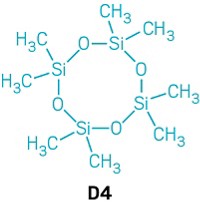Advertisement
Grab your lab coat. Let's get started
Welcome!
Welcome!
Create an account below to get 6 C&EN articles per month, receive newsletters and more - all free.
It seems this is your first time logging in online. Please enter the following information to continue.
As an ACS member you automatically get access to this site. All we need is few more details to create your reading experience.
Not you? Sign in with a different account.
Not you? Sign in with a different account.
ERROR 1
ERROR 1
ERROR 2
ERROR 2
ERROR 2
ERROR 2
ERROR 2
Password and Confirm password must match.
If you have an ACS member number, please enter it here so we can link this account to your membership. (optional)
ERROR 2
ACS values your privacy. By submitting your information, you are gaining access to C&EN and subscribing to our weekly newsletter. We use the information you provide to make your reading experience better, and we will never sell your data to third party members.
Food Ingredients
California analysis reignites synthetic food dye concerns
by Britt E. Erickson
April 25, 2021
| A version of this story appeared in
Volume 99, Issue 15

Synthetic food dyes, commonly added to brighten the color of foods, beverages, vitamins, and over-the-counter drugs, are associated with adverse neurobehavioral effects in children, confirms an assessment by the California Environmental Protection Agency. The analysis renews pressure on the US Food and Drug Administration to update acceptable daily intake levels for synthetic food dyes. The FDA established current limits between the 1960s and 1980s. The new assessment, conducted by CalEPA’s Office of Environmental Health Hazard Assessment, finds that some children are more susceptible than others to adverse behavioral effects from artificial food dyes, suggesting genetics is a risk factor for such effects. Consumer advocacy groups, which have been urging the FDA for many decades to address the link between synthetic food dyes and behavioral effects in children, welcome the report. “This is the most comprehensive study of the behavioral effects of synthetic food dyes ever conducted,” Lisa Lefferts, senior scientist at the Center for Science in the Public Interest, says in a statement. “Now is the time to turn from science to action,” she says.





Join the conversation
Contact the reporter
Submit a Letter to the Editor for publication
Engage with us on Twitter